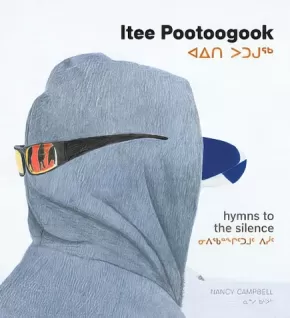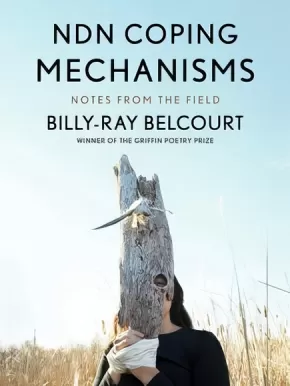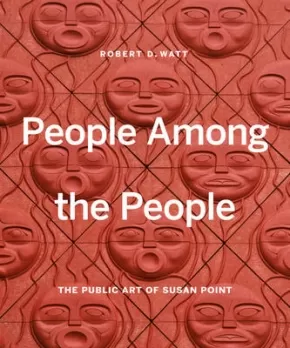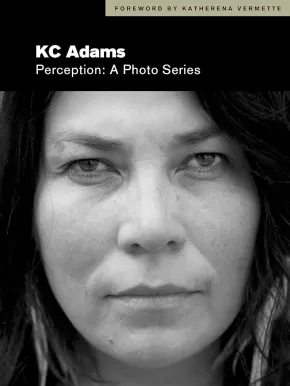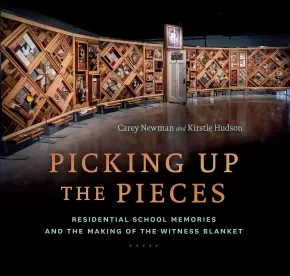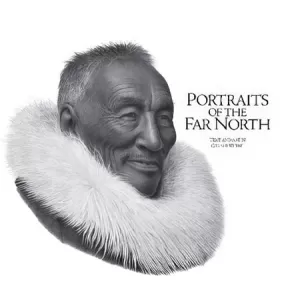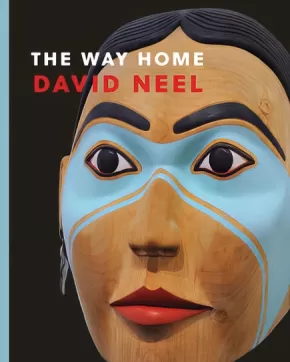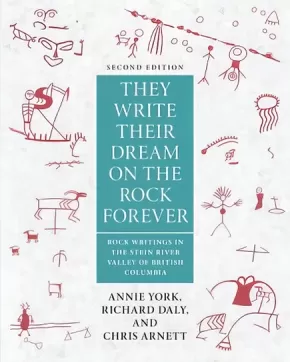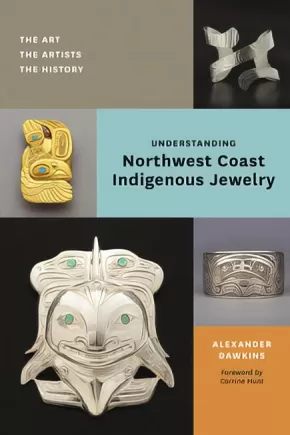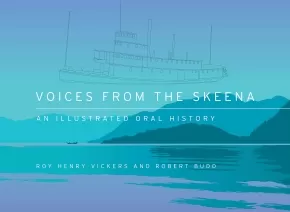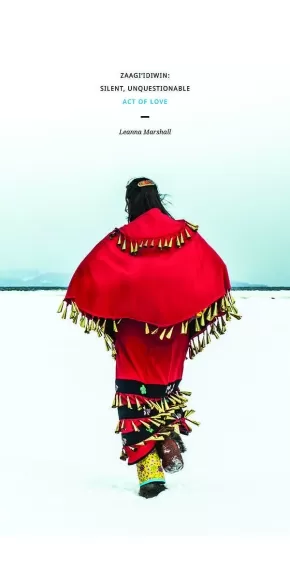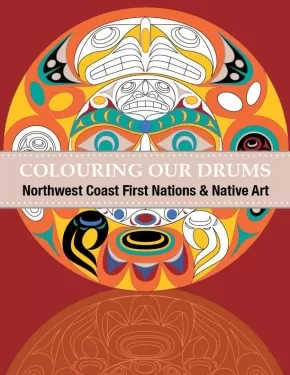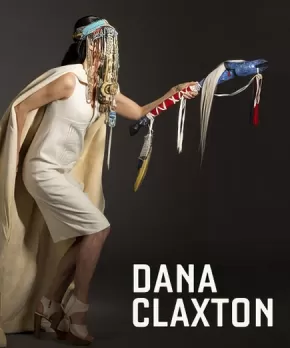
Art
76
-
90
of
139 Results;
Sort By
Go To
of 10
Itee Pootoogook: Hymns to the Silence- ON SALE
$22.50 $45.00
Artists:
Format:
Hardcover
Text Content Territories:
Indigenous Canadian; Inuit;
Grade Levels: University/College;
ISBN / Barcode: 9781773101392
Synopsis:
Synopsis:
Itee Pootoogook belonged to a new generation of Inuit artists who are transforming and reshaping the creative traditions that were successfully pioneered by their parents and grandparents in the second half of the 20th century.
Itee Pootoogook (1951-2014) was part of a generation, including most famously his cousin Annie Pootoogook, that transformed the creative traditions of Inuit art.
A meticulous draughtsman who worked with graphite and coloured pencil, Itee depicted buildings in Kinngait that incorporated a perspectival view, a relatively recent practice influenced by his training as a carpenter and his interest in photography. His portraits of acquaintances and family members similarly bear witness to the contemporary North. Whether he depicts them at work or resting, his subjects are engaged in a range of activities from preparing carcasses brought in from hunting to playing music or contemplating the landscape of the North.
Itee was also an inventive landscapist. Many of his finest Arctic scenes emphasize the open horizon that separates land from sky and the ever-shifting colours of the Arctic. Rendering the variable light of the landscape with precision, he brought a level of attention that contributed, over time, to his style.
Featuring more than 100 images and essays by curators, art historians, and contemporary artists, Itee Pootoogook: Hymns to Silence celebrates the creative spirit of an innovative artist. It is the first publication devoted exclusively to his art.
Additional Information
198 pages | 9.00" x 10.00"
NDN Coping Mechanisms: Notes from the Field
$19.99
Format:
Paperback
Text Content Territories:
Indigenous Canadian;
Grade Levels: University/College;
ISBN / Barcode: 9781487005771
Synopsis:
Synopsis:
In the follow-up to his Griffin Poetry Prize-winning collection, This Wound is a World, Billy-Ray Belcourt aims more of an anthropological eye at the contours of NDN and queer social worlds to spot much that is left unsaid when we look only to the mainstream media. In this genre-bending work, Belcourt employs poetry, poetics, prose, and textual art to illuminate the rogue possibilities bubbling up everywhere NDNs are.
Part One examines the rhythms of everyday life, which include the terrible beauty of the reserve, the afterlives of history, and the grammar of anal sex. Part Two experiments with form and practice, putting to use, for example, a mode of documentary poetics that unearths the logics that make and unmake texts like Treaty 8.
NDN Coping Mechanisms: Notes from the Field emerges out of a form of auto/ethnographic sensibility that is at turns campy and playful, jarring and candid, displaying, once again, the writer’s extraordinary craft, guile, audacity, and the sheer dexterity of his imagination.
Awards
- 2019 Stephan G. Stephansson Award for Poetry Winner
Reviews
"This brilliant book is endlessly giving, lingering in tight spaces within the forms of loneliness, showing us their contours. These poems do the necessary work of negotiating with the heart-killing present from which we imagine and make Indigenous futures. Every line feels like a possible way out of despair.” — Elissa Washuta, author of My Body Is a Book of Rules
“‘I believe I exist. / To live, one can be neither / more nor less hungry than that.’ How grateful I am that Billy-Ray Belcourt and these poems believe in themselves enough to exist. With prodigious clarity, this work moves swiftly amongst theory and prose, longing and lyric, questioning and coping, ‘not dying’ and ‘obsessively apologizing to the moon for all that she has to witness.’ It is not hyperbole to say these poems are brilliant. And so brilliantly, searingly, they live.” — TC Tolbert, author of Gephyromania
“NDN Coping Mechanisms is a haunting book that dreams a new world — a ‘holy place filled with NDN girls, hair wet with utopia’ — as it simultaneously excoriates the world that ‘is a wound’ and the historic and present modalities of violence against Indigenous peoples under Canadian settler colonialism. Belcourt considers the genocidal nation-state, queerness, and the limits and potential of representation, often through a poetic/scholarly lineage that includes Leanne Betasamosake Simpson, Saidiya Hartman, Anne Boyer, José Esteban Muñoz, Christina Sharpe, and Gwen Benaway, among others. This is the beautiful achievement of NDN Coping Mechanisms: Belcourt conjures a sovereign literary space that refuses white sovereignty and is always already in relation to the ideas of the foremost decolonial poets and thinkers of Turtle Island.” — Mercedes Eng, author of Prison Industrial Complex Explodes
Additional Information
112 pages | 6.00" x 8.00"
People Among the People: The Public Art of Susan Point
$60.00
Artists:
Format:
Hardcover
Text Content Territories:
Indigenous Canadian; First Nations; Salish; Coast Salish; Musqueam;
ISBN / Barcode: 9781773270425
Synopsis:
Synopsis:
“I feel that it is important to re-establish our Salish footprint upon our lands, to create a visual expression of the link between the past and present that is both accessible and people-friendly. . . . I create unique, ‘original’ artwork that honours both my people and the diverse group of peoples from around the world who have come to live upon our lands on the Northwest Coast. My hope is that my art leaves a lasting impression on visitors, locals, and the surrounding communities.” — Susan Point
This beautifully designed book is the first to explore Susan Point's publicly commissioned artworks from coast to coast.
Susan Point’s unique artworks have been credited with almost single-handedly reviving the traditional Coast Salish art style. Once nearly lost to the effects of colonization, the crescents, wedges, and human and animal forms characteristic of the art of First Nations peoples living around the Salish Sea can now be seen around the world, reinvigorated with modern materials and techniques, in her serigraphs and public art installations—and in the works of a new generation of artists that she’s inspired.
People Among the People beautifully displays the breadth of Susan Point’s public art, from cast-iron manhole covers to massive carved cedar spindle whorls, installed in locations from Vancouver to Zurich. Through extensive interviews and access to her archives, Robert D. Watt tells the story of each piece, whether it’s the evolution from sketch to carving to casting, or the significance of the images and symbolism, which is informed by surviving traditional Salish works Point has studied and the Oral Traditions of her Musqueam family and elders.
In her long quest to re-establish a Coast Salish footprint in Southwest British Columbia and the Pacific Northwest of the US, Point has received many honours, including the Order of Canada and the Audain Lifetime Achievement Award. This gorgeous and illuminating book makes it clear they are all richly deserved.
Additional Information
208 pages | 10.17" x 12.39" | Colour photographs throughout | Hardcover
Perception: A Photo Series
$34.00
Artists:
Format:
Hardcover
Text Content Territories:
Indigenous Canadian; First Nations; Inuit; Métis;
ISBN / Barcode: 9781553797869
Synopsis:
Synopsis:
Social action art in book form, Perception: A Photo Series encourages readers to look and then look again.
Tired of reading negative and disparaging remarks directed at Indigenous people of Winnipeg in the press and social media, artist KC Adams created a photo series that presented another perspective. Called “Perception Photo Series,” it confronted common stereotypes of First Nation, Inuit and Métis people to illustrate a more contemporary truthful story.
First appearing on billboards, in storefronts, in bus shelters, and projected onto Winnipeg’s downtown buildings, Adam’s stunning photographs now appear in her new book, Perception: A Photo Series. Meant to challenge the culture of apathy and willful ignorance about Indigenous issues, Adams hopes to unite readers in the fight against prejudice of all kinds.
Reviews
"Indeed, the potential lasting impact of this collection can’t be underestimated; this is socially engaged art at its best." — Kirkus Reviews, March 2019
"KC Adams' Perception series challenges us to bridge thought and reality; emerging on the other side better having challenged ourselves to see Indigenous peoples for what they really are. We are grandparents, parents, children - and everything in between. As Adams shows through this incredible exhibition of faces and feelings, we are beautiful, whole, and complex peoples irreducible to stereotypes and slander." — Romeo Saganash (Cree, father, activist, and dreamer)
"KC Adams's Perception series absolutely captured the most devastating perceptions from the colonial mind, and the accompanying lack of knowledge about the truth of Canada's historical relationship to Indigenous Peoples. Succinctly and beautifully, KC transformed that narrative in this series. It is a prolific piece which will always be a source of inspiration for truth and reconciliation. It is unforgettable. Kichi miigwetch KC Adams!." — Tina Keeper, March 2019
"We hear the saying, “A picture can say a thousand words” quite often, but sometimes we don’t take the time to actually look at what we are seeing and what it is saying. Sometimes photographs are taken for fun, with no real meaning behind them. But there are times when a photograph is taken for a purpose, taken to deliver a message. KC Adams, with Perception, is doing just that. She is not only delivering a message, she is also making a statement in order to break down the racial prejudices and stereotypes towards the indigenous community in Canada.... From looking at the first picture that shows their reaction to what people think of them to looking at their second picture that shows their look of pure happiness coupled with their name, their tribes, and the words they would use to describe themselves is what is causing people to think twice, think differently, and spark conversation." — Leslie Trotter, NetGalley, March 2019
"I admire what KC Adams did when she kept hearing disparaging remarks and slurs against the Native peoples of Canada. As an indigenous person herself, she too, had been subjected to mistreatment and prejudice just be being someone who looks different. She was determined to find a way to get people's perceptions to change. The Native/indigenous people and their cultures were here to stay and non-Native people had to come to terms with and accept that. Adams choose to use her skill as a photographer as a catalyst to address the racism and prejudice head on.... She took a series of two photographs of the same person; one as she said a racist remark, the other as she said something positive about the person. She then put up these pictures as posters around municipal areas. The first picture was headlined with the slur said while filming it, the bottom said "Think again". The second picture (taken when she invoked a positive response in them) told who they were and some things about them. This photography series (now captured in her book Perceptions) helped people recognize their own reactions to Native peoples and realize that they were unfair and untrue.... I love when art is not only creative, but an agent for social change! Kudos, Ms. Adams! Well done!" — Kathy Fuchs, NetGalley, February 2019
"Perception is an impressive collection...an inside look into a living legend’s photography practice (I say this in no uncertain terms) and, more importantly, as Adams intended, a reminder to look past the hurt in search of a love that can bring us all home." — Lindsay Nixon, Editor-at-Large Canadian Art, author nîtisânak, Metonymy Press, March 2019
"This is an amazing portrayal of the indigenous community. The emotions displayed by each individual are clearly defined. I highly recommend this resource be placed in all libraries and used to dispel racism and discriminatory ideas." — Shelley Stefanowich, NetGalley, April 2019
Educator & Series Information
For Grades 9-12 / Young Adults
Foreword by Katherena Vermette; Critical essay by Cathy Mattes
Caution: Mature subject matter/language in some instances as this book is dealing with stereotypes and prejudice (radicalized language and derogatory terminology).
Recommended in the Canadian Indigenous Books for Schools 2019-2020 resource list for grades 10 to 12 for Art Education, Social Studies, Social Justice, and English Language Arts.
This book is part of The Debwe Series, a collection of exceptional Indigenous writings from across Canada.
Additional Information
120 pages | 6.75" x 9.00" | Hardcover | Foreward from Katherena Vermette
Performing Turtle Island: Indigenous Theatre on the World Stage
$29.95
Editors:
Format:
Paperback
Text Content Territories:
Indigenous Canadian;
Grade Levels: University/College;
ISBN / Barcode: 9780889776562
Synopsis:
Synopsis:
Following the Final Report on Truth and Reconciliation, Performing Turtle Island investigates theatre as a tool for community engagement, education, and resistance.
Comprised of multidisciplinary and diverse perspectives, Performing Turtle Island considers theatre as a tool for community engagement, education, and resistance, and examines how communities in turn influence the construction of Indigenous identities through theatre.
Contributors:
Megan Davies (York University)
Spy Dénommé-Welch (Brock University)
Floyd Favel (Poundmaker First Nation)
Carol Greyeyes (University of Saskatchewan)
Michael Greyeyes (Muskeg Lake First Nation)
Kahente Horn-Miller (Carleton University)
Dione Joseph (Onehunga, New Zealand)
Catherine Magowan (Hamilton, ON)
Daniel David Moses (Queen's University)
Yvette Nolan (University of Saskatchewan)
Armand Ruffo (Sagamok Ojibway and Chapleau Cree Fox Lake First Nations, Queen's University)
Annie Smith (Grand Prairie Regional College)
Reviews
“Brilliantly introduces pedagogies that jump scale; a bundling project for future ancestors revealing knowledges for flight into kinstillatory relationships. ” —Karyn Recollet, co-author of In This Together: Blackness, Indigeneity, and Hip Hop
“An important resource for those who want to introduce or incorporate Indigenous artistic perspectives in their course or work. ” —Heather Davis-Fisch, author of Loss and Cultural Remains in Performance
“A very significant and welcome contribution to the growing body of work on Indigenous theatre and performance in the land now called Canada. ” —Ric Knowles, author of Performing the Intercultural City
Educator Information
Understanding Indigenous cultures as critical sources of knowledge and meaning, each essay addresses issues that remind us that the way to reconciliation between Canadians and Indigenous peoples is neither straightforward nor easily achieved. Comprised of multidisciplinary and diverse perspectives, Performing Turtle Island considers performance as both a means to self-empowerment and self-determination, and a way of placing Indigenous performance in dialogue with other nations, both on the lands of Turtle Island and on the world stage.
Additional Information
256 pages | 6.00" x 9.00" | 5 photos, 1 table
Picking Up the Pieces: Residential School Memories and the Making of the Witness Blanket
$39.95
Format:
Hardcover
Text Content Territories:
Indigenous Canadian; First Nations; Kwakwaka'wakw (Kwakiutl); Salish; Coast Salish; Sto:lo; Cheam;
ISBN / Barcode: 9781459819955
Synopsis:
Synopsis:
Every object tells a story.
Picking Up the Pieces tells the story of the making of the Witness Blanket, a living work of art conceived and created by Indigenous artist Carey Newman. It includes hundreds of items collected from residential schools across Canada, everything from bricks, photos and letters to hockey skates, dolls and braids. Every object tells a story.
Carey takes the reader on a journey from the initial idea behind the Witness Blanket to the challenges in making it work to its completion. The story is told through the objects and the Survivors who donated them to the project. At every step in this important journey for children and adults alike, Carey is a guide, sharing his process and motivation behind the art. It's a very personal project. Carey's father is a residential school Survivor. Like the Blanket itself, Picking Up the Pieces calls on readers of all ages to bear witness to the residential school experience, a tragic piece of Canada’s history.
"In the traditions of my Salish ancestors, a blanket is gifted to uplight the spirit, protect the vulnerable or honour the strong. I made this blanket for the Survivors, and for the children who never came home; for the dispossessed, the displaced and the forgotten. I made this blanket so that I will never forget -- so that we will never forget." - Carey Newman
Reviews
"Picking Up the Pieces is both a crucial record of history and an outstanding assertion of love and community. The story behind the creation of the powerful Witness Blanket project is one of great care and consideration, with residential school Survivors and their families at the centre. By sharing his own family's connection to a brutal and shameful part of Canadian history, renowned artist Carey Newman brilliantly guides us through the meticulous and thoughtful process of creating one of the most important pieces of art to exist in this country. I had the privilege of experiencing the Witness Blanket on its tour, and it was a poignant moment that will stay with me for the rest of my life. Reading how it all came together is yet another vital experience. Like the Witness Blanket itself, Picking Up the Pieces will educate and enlighten Canadians for generations to come. It's a must-read for anyone seeking to understand Canada's residential-school saga. Most importantly, it's a touchstone of community for those survivors and their families still on the path to healing." — Waubgeshig Rice, journalist and author of Moon of the Crusted Snow, March 2019
Educator Information
Themes: Indigenous Art, Reconciliation, Residential Schools, Survivor Stories, Intergenerational Trauma
Suitable for most ages (about 12 years+). Useful social studies or Indigenous studies resource for pre-teens and teens; however, it does make reference to sexual, emotional, and physical abuse and trauma.
Recommended in the Canadian Indigenous Books for Schools 2019-2020 resource list for grades 11 and 12 and as a teacher resource. Useful for these subjects: English Language Arts, Media Studies, Social Studies.
Additional Information
180 pages | 10.75" x 10.00"
Portraits of the Far North
$39.95
Format:
Hardcover
Text Content Territories:
Indigenous Canadian; Inuit;
ISBN / Barcode: 9781989282304
Synopsis:
Synopsis:
For over two decades, Manitoban artist Gerald Kuehl has travelled to the far-flung corners of Canada to draw out these answers from the last generation of Indigenous Peoples born on the land, and, pencil in hand, to record their likenesses and experiences. These Elders shared their gripping stories with him so that he might share them with the world.
Picking up where Kuehl’s acclaimed Portraits of the North left off, these pages follow the artist as he crosses the 60th parallel into Nunavut and the Far North, to meet the few Inuit Elders who still remember the days when their people lived entirely off the bounty of the land. The astonishing graphite pencil drawings and accompanying stories within—the result of Kuehl’s travels in Nunavut over thirteen years, hundreds of interviews with Elders, and thousands of hours at the drawing board—provide an unprecedented, poignant account of the changing realities Inuit experienced over the course of the last century, and their bright hopes for the future. These are tales of hardship and survival, of family and tradition, and of optimism and resilience. These are the faces and the voices of the Far North.
Additional Information
240 pages | 10.25" x 10.50"
The Way Home
$32.95
Artists:
Format:
Paperback
Text Content Territories:
Indigenous Canadian; First Nations; Kwakwaka'wakw (Kwakiutl);
ISBN / Barcode: 9780774890410
Synopsis:
Synopsis:
David Neel was an infant when his father, a Kwakwa̱ka̱’wakw artist, died, triggering a series of events that would separate him from his homeland and its rich cultural traditions for twenty-five years. When he saw a Potlatch mask carved by his great-great-grandfather in a museum in Fort Worth, Texas, the encounter caused the aspiring photographer to wonder if he could return to follow in his father’s footsteps.
Drawing on memory, legend, and his own art and photographs, Neel tells the story of his struggle to reconnect with his culture after decades of separation and a childhood marred by trauma and abuse. David returned to the Pacific Coast, where he apprenticed with master carvers from his father’s village on Vancouver Island, and his career as an author and artist took him to the United States and to Mexico, to Europe and back again to British Columbia. Along the way, he met and photographed some of the most talented artists and Indigenous people of his generation. His travels helped him grow as a man and become an accomplished and prolific artist, but they also reconfirmed the healing power of returning home.
The Way Home is a testament to the strength of the human spirit to overcome great obstacles and to the power and endurance of Indigenous culture and art.
Educator Information
This memoir is a must-read for anyone interested in Canadian art and artists, particularly Indigenous art, as well as those learning about or active in cultural revitalization in Indigenous communities.
Subjects / Themes: Indigenous Art, Canadian Art, Memoir.
This resource is recommended in the Canadian Indigenous Books for Schools 2020/2021 list for grades 9 to 12 for Art Education, English Language Arts, and Social Studies.
Caution: includes memories of domestic violence.
Additional Information
192 pages | 8.00" x 10.00"
They Write Their Dreams on the Rock Forever: Rock Writings in the Stein River Valley of British Columbia
$29.95
Format:
Paperback
Text Content Territories:
Indigenous Canadian; First Nations; Salish; Interior Salish; Nlaka'pamux (Thompson);
Grade Levels: 12; University/College;
ISBN / Barcode: 9781772012200
Synopsis:
Synopsis:
In They Write Their Dreams on the Rock Forever, ‘Nlaka’pamux elder Annie York explains the red-ochre inscriptions written on the rocks and cliffs of the lower Stein Valley in British Columbia. This is perhaps the first time that a Native elder has presented a detailed and comprehensive explanation of rock-art images from her people’s culture. As Annie York’s narratives unfold, we are taken back to the fresh wonder of childhood, as well as to a time in human society when people and animals lived together in one psychic dimension.
This book describes, among many other things, the solitary spiritual meditations of young people in the mountains, once considered essential education. Astrological predictions, herbal medicine, winter spirit dancing, hunting, shamanism, respect for nature, midwifery, birth and death, are some of the topics that emerge from Annie’s reading of the trail signs and other cultural symbols painted on the rocks. She firmly believed that this knowledge should be published so that the general public could understand why, as she put it, “The Old People reverenced those sacred places like that Stein.”
They Write Their Dreams on the Rock Forever opens a discussion of some of the issues in rock-art research that relate to “notating” and “writing” on the landscape, around the world and through the millennia. This landmark publication presents a well-reasoned hypothesis to explain the evolution of symbolic or iconic writing from sign language, trail signs and from the geometric and iconic imagery of the dreams and visions of shamans and neophyte hunters. This book suggests that the resultant images, written or painted on stone, constitute a Protoliteracy which has assisted both the conceptualization and communication of hunting peoples’ histories, philosophies, morals and ways life, and prepared the human mind for the economic, sociological and intellectual developments, including alphabetic written language.
Additional Information
320 pages | 6.75" x 9.75" | 2nd Edition
Understanding Northwest Coast Indigenous Jewelry
$24.95
Format:
Paperback
Text Content Territories:
Indigenous American; Indigenous Canadian;
ISBN / Barcode: 9781771642972
Synopsis:
Synopsis:
As beautiful as it is useful, Understanding Northwest Coast Indigenous Jewelry is an invaluable tool for anyone interested in learning about or deepening their understanding of a fascinating craft.
Indigenous hand-engraved jewelry from the Pacific Northwest Coast is among the most distinctive, innovative, and highly sought-after art being produced in North America today. But these artworks are more than just stunning—every bracelet, ring, and pendant is also the product of a fascinating backstory, a specialized set of techniques, and a talented artist.
With a clearly written text, a foreword by award-winning First Nations artist Corrine Hunt, and more than one hundred striking color photographs and sidebars, Understanding Northwest Coast Indigenous Jewelry offers an illuminating look at an exquisite craft and the context in which it is practiced.
Providing a step-by-step overview of various techniques, the book also introduces the specifics of formline design, highlights the traits of the most common animal symbols used, offers tips for identification, and features biographies and works from over fifty of the Coast’s best-known jewelers. Finally, it delves into the history of the art form, from the earliest horn and copper cuff bracelets to cutting-edge contemporary works and everything in between.
Educator Information
Recommended in the Canadian Indigenous Books for Schools 2019-2020 resource list for grades 9 to 12 for Arts Education, English Language Arts, and Social Studies.
Additional Information
192 pages | 6.00" x 9.00"
Voices from the Skeena: An Illustrated Oral History
$36.95
Format:
Hardcover
Text Content Territories:
Indigenous Canadian; First Nations; Gitxsan (Gitksan); Tsimshian (Ts'msysen);
ISBN / Barcode: 9781550178838
Synopsis:
Synopsis:
The Skeena, second longest river in the province, remains an icon of British Columbia’s northwest. Called Xsien (“water of the clouds”) by the Tsimshian and Gitksan, it has always played a vital role in the lives of Indigenous people of the region. Since the 1800s, it has also become home to gold seekers, traders, salmon fishers and other settlers who were drawn by the area’s beauty and abundant natural resources.
Voices from the Skeena takes readers on a journey inspired directly by the people who lived there. Combining forty illustrations with text selected from the pioneer interviews CBC radio producer Imbert Orchard recorded in the 1960s, the book follows the arrival of the Europeans and the introduction of the fur trade to the Omineca gold rush and the building of the Grand Trunk Pacific Railroad.
Open the pages to meet Robert Cunningham, an Anglican missionary who would later become the founder of the thriving Port Essington. Here too is a man called Cataline, a packer for whom no settlement was too remote to reach, and the indominable Sarah Glassey, the first woman to pre-empt land in British Columbia. At the heart of these stories is the river, weaving together a narrative of a people and their culture. Pairing the stories with Roy Henry Vicker’s vibrant art creates a unique and captivating portrait of British Columbia that will appeal to art lovers and history readers alike.
Additional Information
112 pages | 11.00" x 8.00" | 40 colour illustrations
This work has received the Authentic Indigenous Text label because of the interviews/contributions with Indigenous people like Vicky Sims and Chief Jeffrey H. Johnson. It is up to readers to determine if this work is authentic for their purposes.
Zaagi'idiwin: Silent, Unquestionable Act of Love
$20.00
Format:
Paperback
Text Content Territories:
Indigenous Canadian; First Nations; Anishinaabeg; Oji-Cree;
Grade Levels: University/College;
ISBN / Barcode: 9780994036124
Synopsis:
Synopsis:
Zaagi'idiwin: Silent, Unquestionable Act of Love, creates an intersection where viewers meet to understand and explore the essence of relationships, the meaning of connection/disconnection, and the pain of loss. Through the making and documentation of jingle dresses, Marshall explores the deeply personal stories that have shaped her perception of the complexities of her family history in the context of Canadian history. The social inequities, resistance, and sorrow communicated in this body of work serve as a springboard to examine the act of compassion and forgiveness, which ultimately helps to move forward to a new and more affirmative place of being.
Additional Information
28 pages | 5.25" x 10.50"
Among Trees: A Guided Journal for Forest Bathing
$23.95
Format:
Hardcover
ISBN / Barcode: 9781604698893
Synopsis:
Synopsis:
Fully illustrated with gorgeous color photographs of the forest and its inhabitants, Among Trees is a lush guided journal that helps you record and reflect on your therapeutic trips into the woods. Use the blank pages to capture the date, season, weather, and location of specific outings. Creative prompts throughout will help you deepen your experience. Inspirational quotes and sidebars on the benefits of forest bathing pepper the pages for added motivation and depth.
Reviews
"[This journal] can help you add this delightful practice to your life and help you experience greater health on all levels.” —New Spirit Journal
Additional Information
224 Pages | 6" x 8.25"
Colouring Our Drums: Northwest Coast First Nations & Native Art Colouring Book
$11.00
Artists:
Format:
Paperback
Text Content Territories:
Indigenous Canadian; First Nations; Indigenous American;
ISBN / Barcode: CCLR74
Synopsis:
Synopsis:
Native Elements - Colouring Our Drums: Northwest Coast First Nations and Art
We are all born to the beat of a drum, it is within us. Our drum beat is what leads us to find our own path through our journey in life. - Doug Horne, Coast Salish
Features:
Features 32 pages of original drum drawings from Northwest Coast Indigenous artists. One page at the beginning of the book includes words and insights from the artists about drums.
Printed in Canada using non-toxic, vegetable based ink, and water based coating.
32 pages; measures 8.5" x 11".
Additional Information
This is a colouring book for adults and young adults; however, intermediate and secondary students would still enjoy colouring in the intricate drum drawings.
Dana Claxton
$40.00
Artists:
Format:
Hardcover
Text Content Territories:
Indigenous Canadian; First Nations; Sioux; Lakota; Hunkpapa;
ISBN / Barcode: 9781773270500
Synopsis:
Synopsis:
Known for her expansive multidisciplinary approach to art making Vancouver-based Dana Claxton, who is Hunkpapa Lakota (Sioux), has investigated notions of Indigenous identity, beauty, gender and the body, as well as broader social and political issues through a practice which encompasses photography, film, video and performance. Rooted in contemporary art strategies, her practice critiques the representations of Indigenous people that circulate in art, literature and popular culture in general. In doing so, Claxton regularly combines Lakota traditions with "Western" influences, using a powerful and emotive "mix, meld and mash" approach to address the oppressive legacies of colonialism and to articulate Indigenous world views, histories and spirituality. This timely catalogue is the first monograph to examine the full breadth and scope of Claxton's practice. It's extensively illustrated and includes essays by Claxton's colleague Jaleh Mansoor, Associate Professor in the Department of Art History, Visual Art & Theory at the University of British Columbia; Monika Kin Gagnon, Professor in the Communications Department at Concordia University, who has followed Claxton's work for 25 years; Olivia Michiko Gagnon, a New York-based scholar and doctoral student in Performance Studies; and Grant Arnold, Audain Curator of British Columbia Art at the Vancouver Art Gallery.
Additional Information
160 pages | 9.08" x 10.60"
Sort By
Go To
of 10

